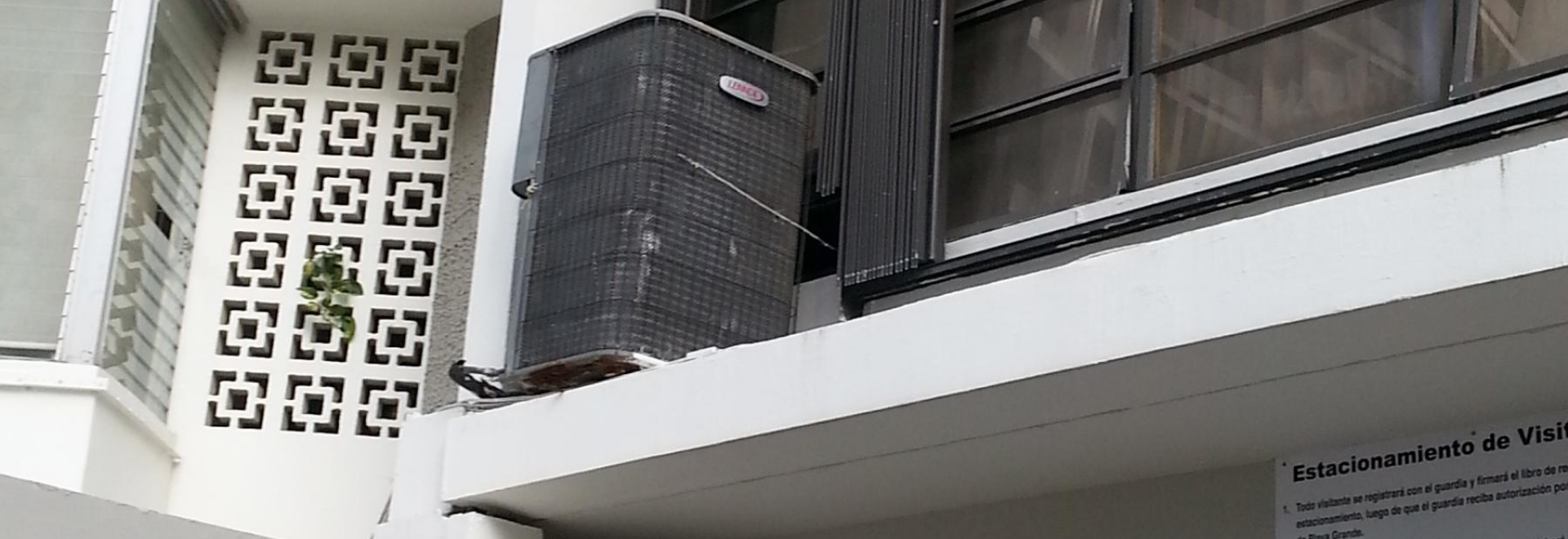
LUCKY ME: I spent last weekend in Puerto Rico visiting my brother, whose company relocated from Texas to the “Isla de Encanta” (“Island of Love”, the slogan on their license plates) to take advantage of the corporate tax loophole that exists – I will say no more about that, but trust me when I tell you that this loophole is quite large, and somewhat ridiculous as well. Anyway, as beautiful as the island was, it was also quite warm by our Central New Jersey regional standards: the daytime highs were 91 – everyday – and the nighttime low barely dipped under 80. While that might sound fantastic to some of you – okay; most of you – please believe me when I say that the relative humidity also hovers in that 80-90 range as a percentage; and any New Jersey resident that has spent the Summer here can tell you that’s a bit sticky, to say the least!
SO; with temps & humidity reading about the same figure, I went looking for some artificial cooling, namely Central Air Conditioning – and found none. Don’t get me wrong – there’s plenty of Air Conditioning to be found on the island; but the “Central” - which generally refers to systems that distribute their comfort throughout the space via ductwork – was not found anywhere. It seems that Puerto Rico, like most of the rest of the world, doesn’t believe in trying to install sheet metal boxes (ductwork), and instead has embraced ductless “Mini-Splits” for their cooling – and heating – needs.
For those of you who aren’t familiar with “Mini-Splits”, these are systems that start the same way as Central systems do, with outdoor & indoor components; but instead of all being tied into a duct system for distribution, the outdoor unit connects to 1 or more wall/ceiling/floor-mounted units (depending on how many rooms/areas are in need, and the mounting options for each), that have built-in multi-speed fans for individual room targeting. The outdoor portion can be a “Cooling Only” Air Conditioner, but more often these systems are being used for heating as well as cooling, in which case the outdoor unit is a Heat Pump.
While there are still a few advantages to a centrally-distributed system, for those considering adding an addition to their homes, or finishing a previously-unconditioned space like a basement or attic, the Mini-Split option should be strongly considered for the following reasons, and more:
- Brand-name Reliability: Most of the major HVAC manufacturers, like Lennox & Trane, manufacturer Mini-Splits with the same quality expected from their “ducted” equipment; and there are also many well-known manufacturers that specialize in Mini systems, like Fujitsu, Mitsubishi & LG, to name just a few.
- Installation Flexibility: Because no ductwork is required, these systems allow for cleaner & easier installations than Central systems do. The outdoor unit can be installed almost anywhere, including on a narrow ledge of a high-rise building, as shown in the accompanying pictures.
- Efficiency: Mini-Splits can be several times more efficient than even the highest-rated Central systems.
- Room-by-room control: Unlike the Central system, you can heat or cool just the areas in need without also heating/cooling all of the other rooms that would normally receive airflow from a Central system.
- Cost of Installation: Again, because there’s no ductwork to fabricate & install, the materials involved in a Mini install are much less than those needed for a Central install; and the labor involved is significantly less, so you can save on this as well.
The bottom line is that while Mini-Splits are not perfect for every application/installation, they make a strong argument for their consideration vs. the traditional ducted system installation/expansion. You can invest your hard-earned dollars towards sheet metal boxes & the labor to make & install them, but if it was my hard-earned dollars in question, I know I would rather see them applied towards the technology/equipment, and not towards the men who install these systems!
